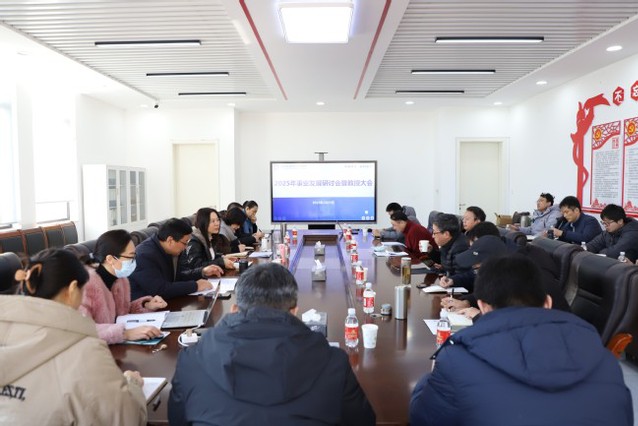
To analyze development trends, plan 2025 priorities, and strengthen faculty governance, the School of Materials Science and Engineering held its 2025 Development Strategy Symposium & Full Professor Conference on February 23, chaired by Du Junhua,
Secretary of the Party Committee. Secretary Du emphasized 2025 as a pivotal year marking the conclusion of the 14th Five-Year Plan, the planning phase for the 15th Five-Year Plan, the centenary of the university, and a critical period for discipline construction. Facing technological breakthroughs, educational reforms, talent competition, and industrial transformations, she called for collective efforts to implement the General Secretary’s important reply spirit through three guiding principles: unwavering vision, pragmatic execution, and strategic foresight.
Dean Cui Hongzhi delivered a keynote speech titled Consolidate Strengths, Foster Uniqueness, Address Weaknesses, and Unite for Development, analyzing the current development landscape from multiple dimensions. She highlighted the school’s achievements and identified areas needing improvement, stressing the need to leverage opportunities, draw on external resources, and tap into expertise to achieve discipline development goals. The dean outlined key strategic priorities, including: strengthening faculty teams and interdisciplinary collaboration, deepening educational and teaching reforms, enhancing scientific research innovation and efficiency, elevating and expanding academic platforms, accelerating societal impact through industry partnerships, and promoting multi-level international and domestic cooperation. She emphasized the importance of breakthroughs in national-level talent cultivation, landmark achievements, and state-of-the-art academic platforms, while proposing actionable measures in faculty development, platform construction, talent training, research innovation, industry collaboration, and technology commercialization.
Leadership members outlined discipline-specific strategies in: faculty development, platform construction, talent cultivation, research innovation, industry collaboration and technology commercialization. Attendees engaged in in-depth discussions, volunteered task assignments, and aligned key performance indicators with actionable plans.
Participants included school leaders, full professors, Party branch secretaries, and administrative representatives.
Text/Photos: Li Wei


